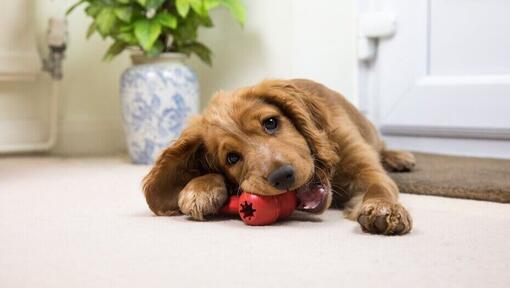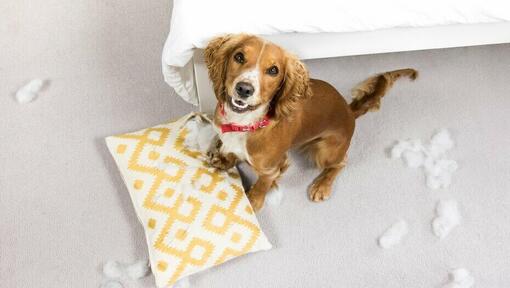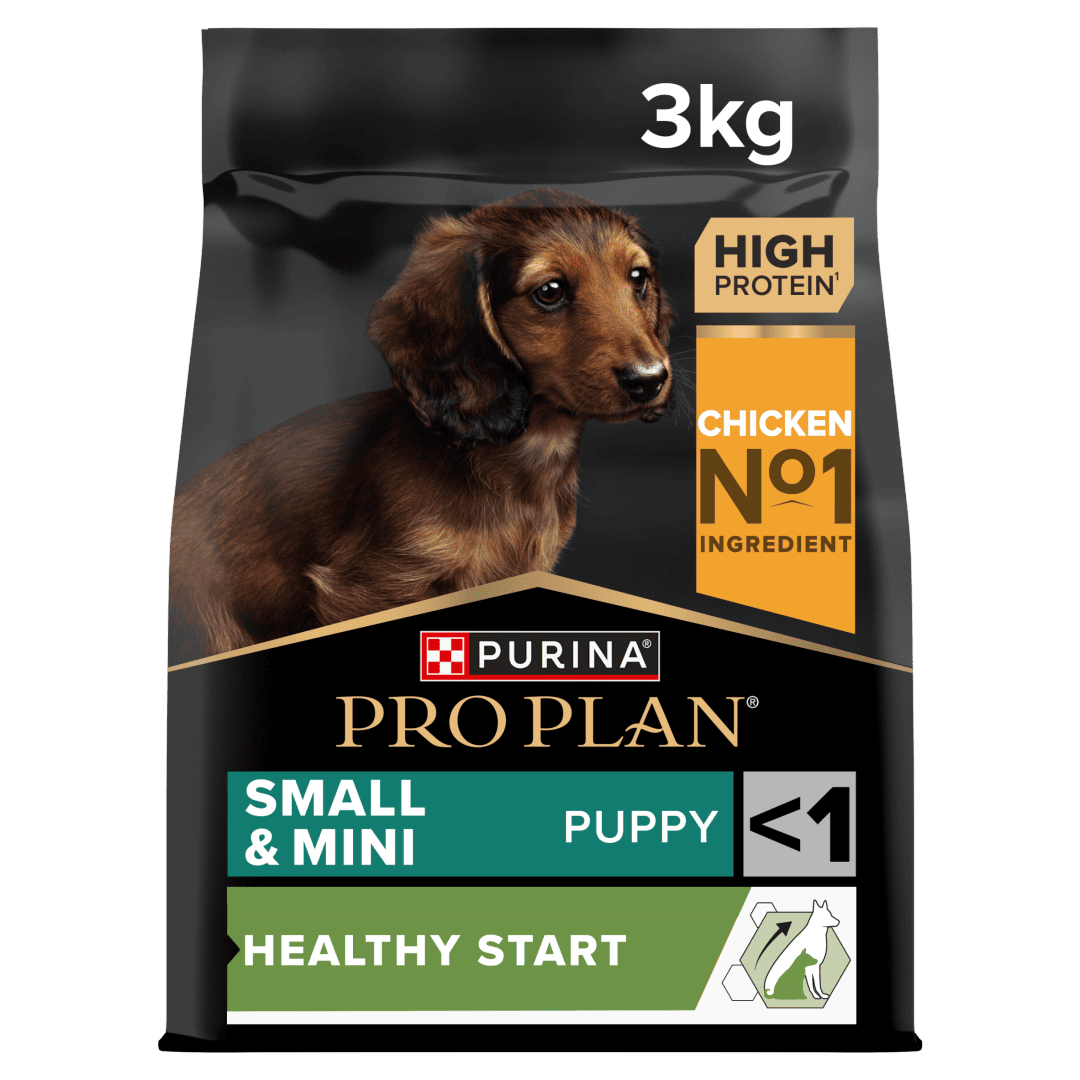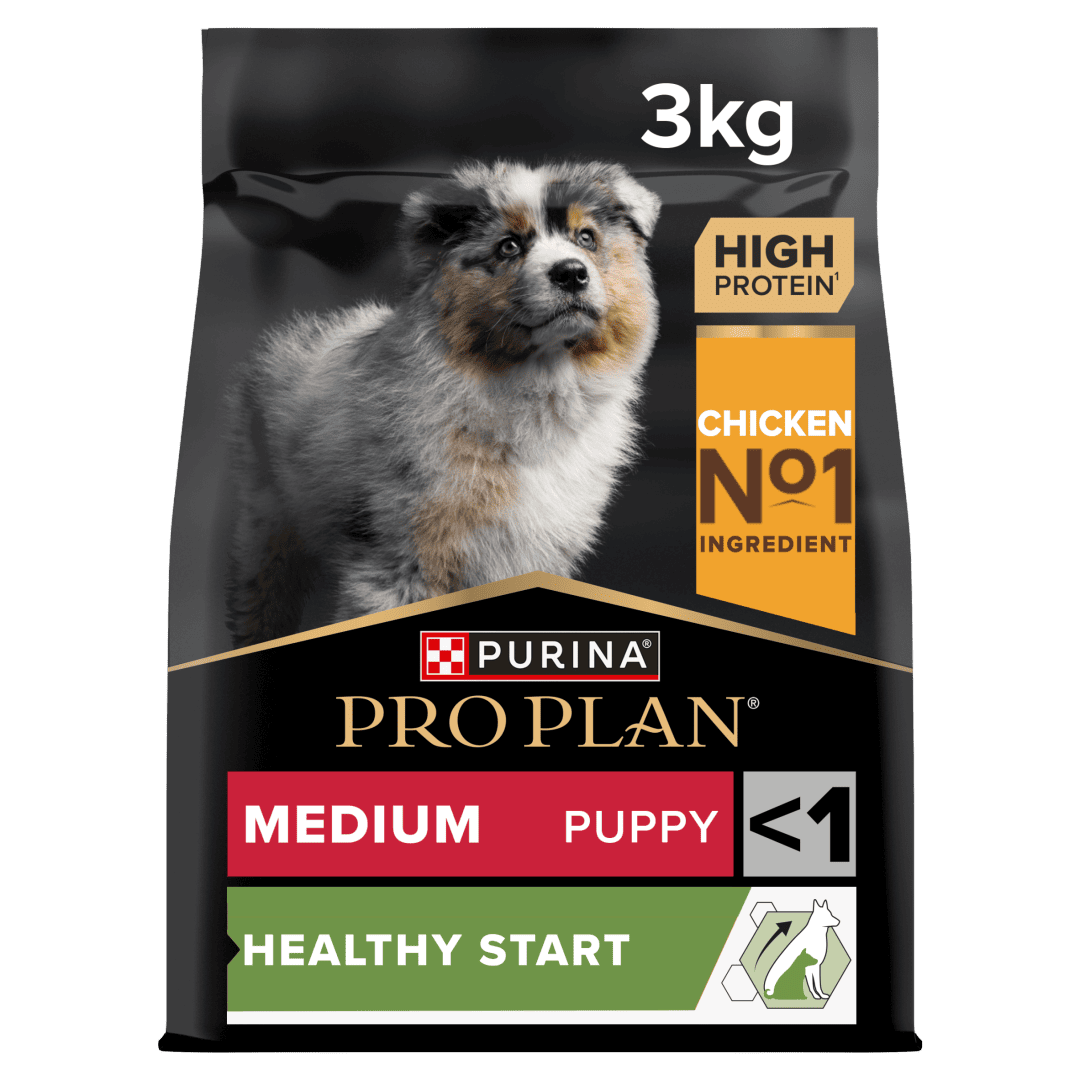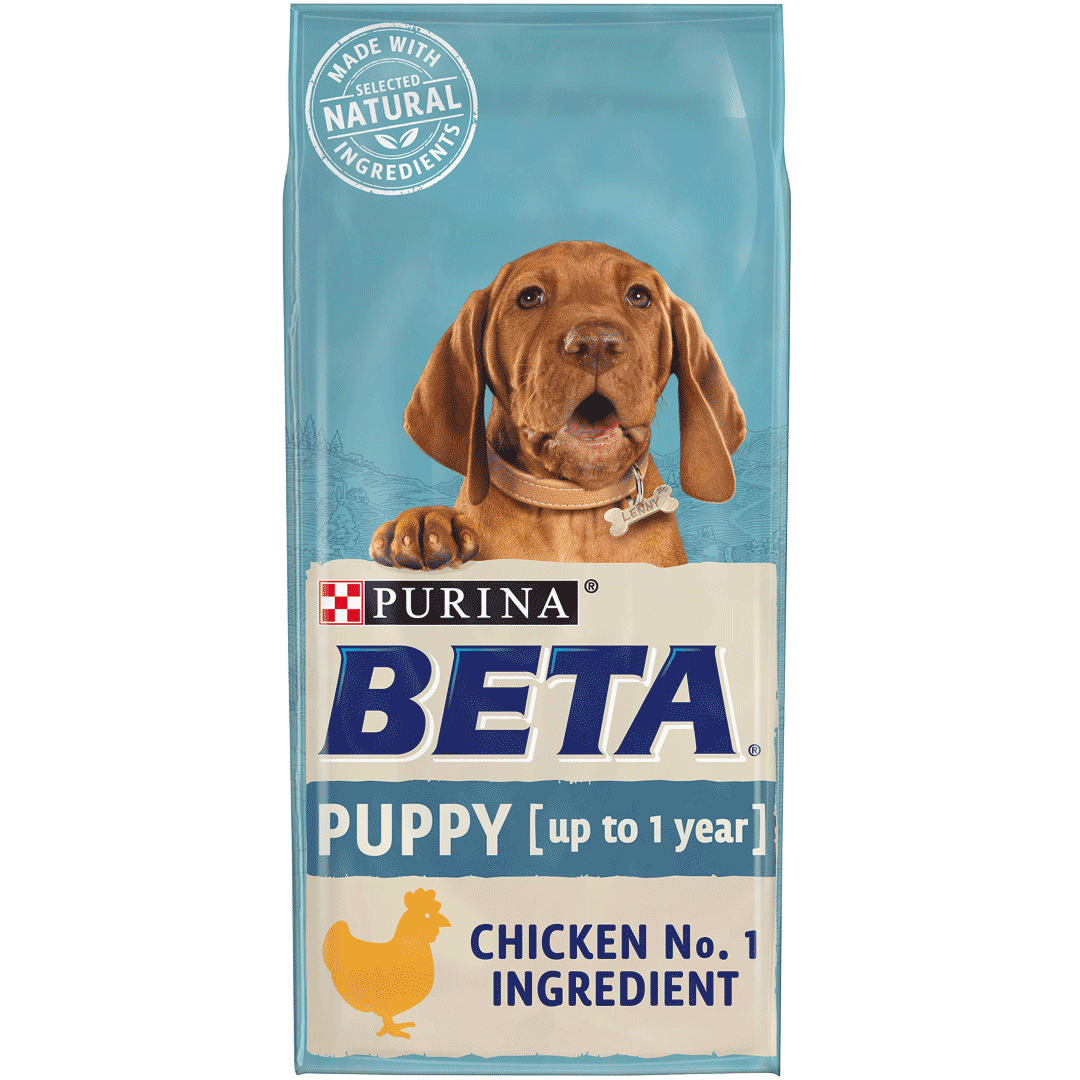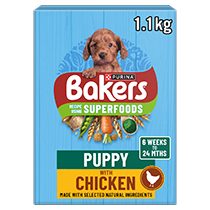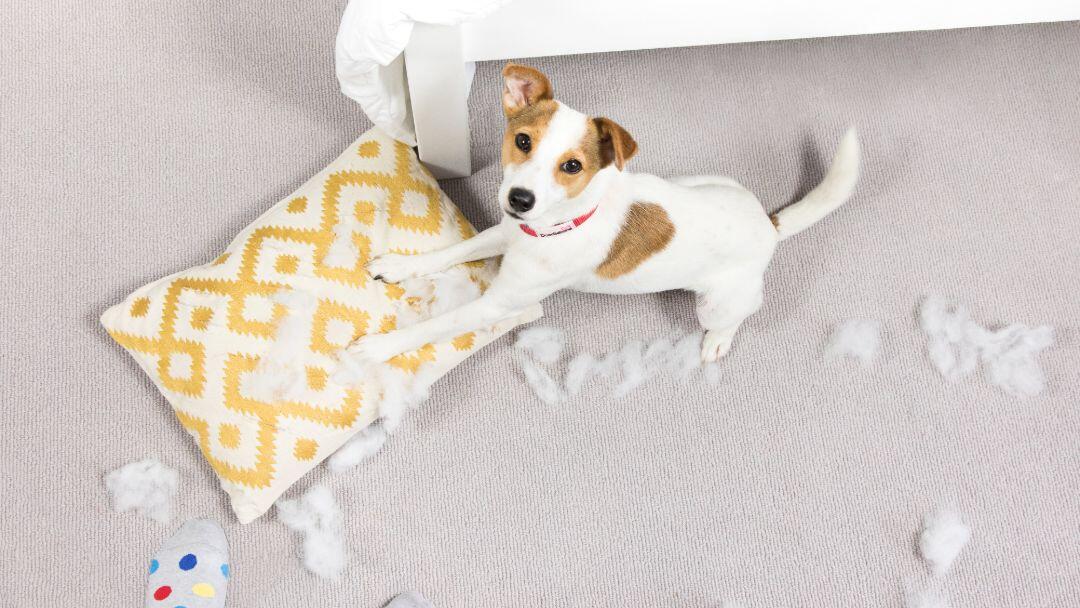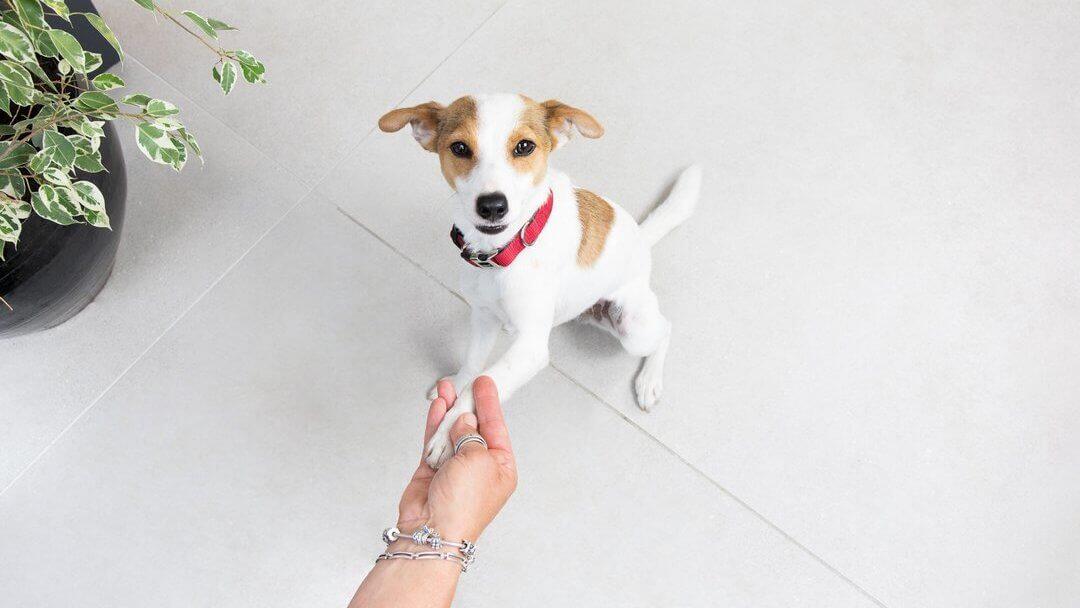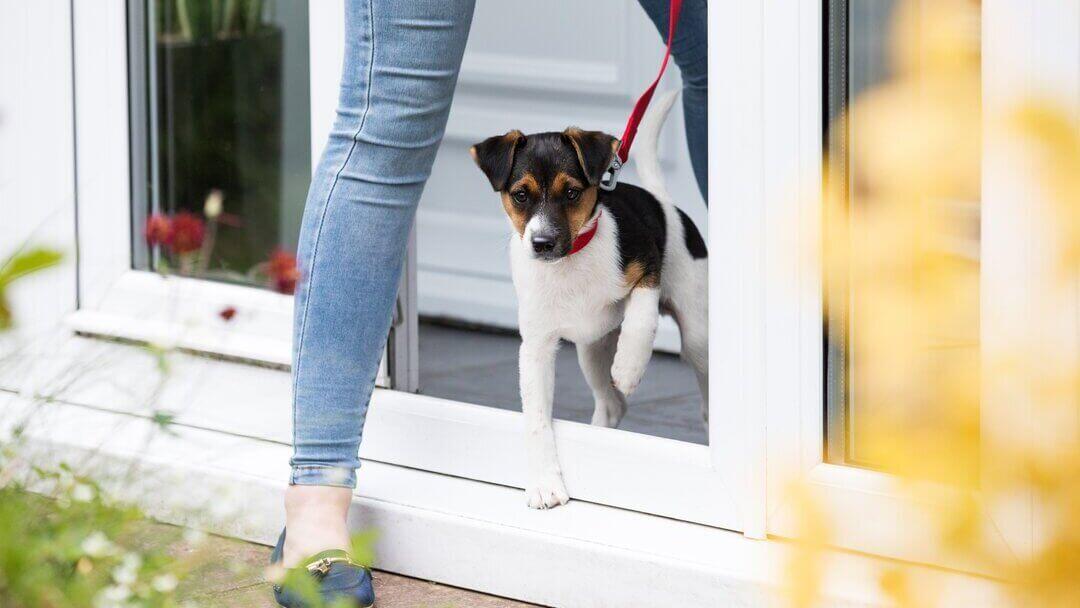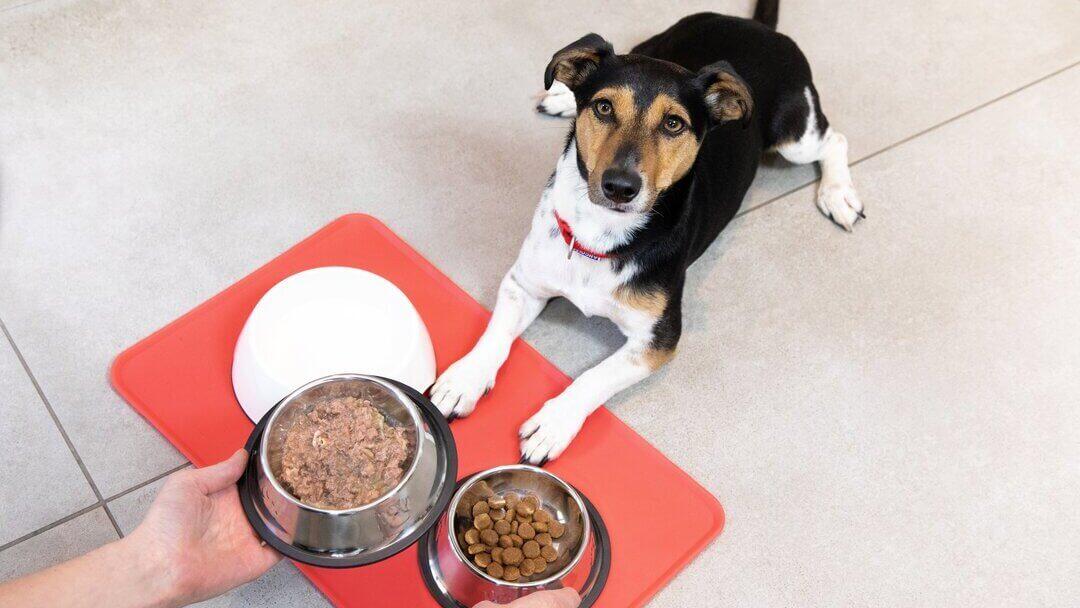

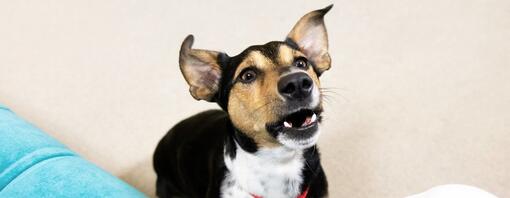
All puppies go through a teething phase. Puppy teething is when they outgrow their puppy teeth, which are replaced by more permanent, adult teeth.
This happens at a different age depending on their breed and size. But the effects of teething are the same: an irritable puppy and damage to your house! In this article, we explore why puppy teething can be a destructive phase and talk you through five steps that can make the whole process easier on both you and your pup.
When do puppies start teething?
All mammals have to go through a teething stage; this includes both you and your puppy. Unlike humans, puppy teething starts at around 16 weeks of age. This means their milk teeth will begin to fall out and new adult teeth will start to poke through.
Once the puppy teething process begins do not be surprised if your dog is chewing everything is sight – this kind of behaviour is completely normal. We recommend you provide your dog with plenty of chew toys throughout this period and praise them for using them, to save your furniture and belongings.
When do puppies lose their teeth?
It usually takes around four months for puppies to go through the whole process of teething. By the age of 7-8 months your puppy should have grown most of their adult teeth but if they’re not all there yet try not to worry too much.
If it gets to 9 months however and there are still some adult teeth missing, have a chat with your vet. They will be able to access your puppy’s mouth and teeth, and can either reassure you or suggest any dental work that might be needed.
Why can puppy teething be so destructive?
Puppy teething means discomfort (and sometimes pain) for your pup: their gums may become red and swollen both as their milk teeth become loose and fall out and also while new, bigger ones erupt. Who wouldn’t be uncomfortable?
Your pup handles this discomfort and pain by chewing. Chewing helps ease some of the irritation on their gums (a bit like scratching an itch) – and also helps the new teeth grow through healthily.
Couple that with their natural curiosity as they continue to discover new or interesting things with their mouth, and they could start to chew anything and everything in your house if you don’t give them plenty of suitable alternatives.
While puppy teething is a natural part of canine development, it doesn’t mean you have to survive with chewed-up furniture and missing shoes! Keep on reading to find out how to puppy-proof your home from puppy teething.
Creating a puppy-proof home when your puppy is teething
Distract your puppy with chew toys
One of the best ways to keep a puppy away from your valuable items is to provide plenty of puppy teething toys they are great to give to you puppy for them to specifically designed for teething, chewing and gnaw away ating. These kinds of toys are extremely popular and readily available from local pet stores or the internet. Rubber Kong toys are ideal as you can put some food inside them – or smear them with meat paste – and make them far more appealing to chew than your slippers.
There are a range of chew toys you can invest in during the puppy teething phase. We would recommend buying several so that your puppy can move from one to the other, depending on their mood. The softness and chew-ability of the chew toy is important. When your pup has just started teething, they may need something softer on their milk teeth, whereas they would need something more durable and challenging once their jaw has developed and they have more power to their bite. Experiment with what your puppy prefers – and needs at any one time.
Cold chews are great for puppy teething
You can also buy puppy teething chew toys that can be frozen. A Chilly Bone can be soaked and then frozen while a rubber Kong toy can be stuffed with food and then put in the freezer. Try different alternatives to see which works best for your puppy.
These freezeable toys are particularly attractive because they are soothing for your pup’s gums. This can be a special blessing for those pups who are having a rough time with the puppy teething process. Make sure you do not give your pup ice cubes though, as they may be too rough on their teeth, and there is a danger they can be swallowed whole. Frozen carrots are a much better alternative to ice cubes (although they will stain your carpet so be careful).
Remove objects you don’t want them to chew
It is natural for puppies to chew things are part of their investigations and explorations so it is important that you teach them to make the right choices when they decide what to chew.
You can do this by making sure they have plenty of their own things to chew in every room they spend any time that are more appealing than the things they might find lying around.
And of course, don’t leave things lying around! Tidy up things that your puppy might gnaw on – especially things that are valuable and that you don’t want teeth marks in!
If you do catch them with the remote control in their mouth or chewing enthusiastically on a cushion, simply get one of their own toys, make it seem far more interesting than whatever they have found and then swap them – saying “Leave” as you take the forbidden object – and remind yourself to tidy up a bit better!
If you are consistent when teaching your puppy this, they will soon learn that some items are off limits and they have plenty of things of their own to chew. Remember, your puppy needs to chew when they are teething—they are not simply misbehaving. So, make sure you replace what they are chewing with something else.
Hide your personal belongings
When exploring the world, puppies naturally gravitate to anything that smells like you. It is no wonder, then, that they want to explore your shoes, your socks, your phone—anything that has your scent on it!
Make sure you keep these items where they are not reachable. Put your shoes away in a shoe rack that closes so that your puppy cannot access a shoe and chew on it. If you have any personal items they particularly like to gnaw on, put them on high shelves that your puppy cannot reach. It’s a simple but effective way to puppy proof your house—keep your pup away from temptation!
Safety first is important when your puppy is teething
Puppy teething can also be a dangerous phase. Puppies do not always gravitate towards cushions or shoes; sometimes they want to chew power cables or swallow a button. While playing, pups can seriously harm themselves.
Creating a puppy-proof house is much like planning a home safe for a child. Make sure there are child-locks on all the drawers (especially in the kitchen) so that your puppy cannot jump up and accidentally open them.
You can also buy dog gates. These gates are like baby gates—they are not very high but they keep your pup out of the dangerous places or areas where they may cause a lot of damage. No one wants their pup eating through their collection of books or their work for the next day!
While puppy teething can be a potentially destructive phase in life, there are ways to make it easier for your puppy while still making sure it does not ruin your house.
Even better, once your puppy stops teething, you will have an intact home and a happy, well-trained pup!
There is a lot to learn about caring for a new puppy, and it isn’t an easy task, but it does get easier! That’s our guide on puppy teething, and all the tips and tricks to make it that little bit easier. So, if you want to learn more about your puppy and what to expect in the coming months, why not check out our article on preparing for a puppy.



